fundraising
What to Expect With Your Fundraising Outreach in FY20 and FY21: RNL Data Provide Answers
“Be safe” were words I uttered only to my kids before they informed me that they were going to “build something” in the garage. But over the past few weeks, it’s become the common close to most video calls and the phrase I utter the most in the rare instances where I have to venture out of the house.
In advancement, we’ve tried to “be safe.” We’ve shut down offices and put in-person donor visits on hiatus. Most organizations are also being “safe” with the level of fundraising and engagement we think is right during this time. While a short term pause was the right strategy for many institutions, we are now seeing the damage COVID-19 is reeking on the economy and to the health and stability of higher education institutions. Furloughs and budget cuts combined with many expecting that fundraising goals will increase or at least maintain at FY20 levels means institutions are going to have to ramp up their engagement and fundraising efforts now.
To help our client partners transform their approach for FY20 and beyond, we’ve reprioritized our innovation roadmap. We enabled remote engagement through RNL Engage to keep engagement centers running. We’ve helped partners that clients that utilize RNL ScaleFunder and RNL QuadWrangle inspire and connect with constituents while providing them new opportunities to support critical initiatives.
As you ramp back up and begin to digitally transform your approach for FY21, it’s important to make decisions that are informed by data. Here are answers to some of the burning questions we’ve heard across the country as institutions figure out what to expect as they ramp back up their fundraising.
Will people even want to engage with us right now? The data points to yes.
“Yes!” is the short answer. Hopefully, most of you have been leveraging an omnichannel approach to continue engagement even if you haven’t been soliciting. We took a look at 40 COVID-related email campaigns executed in RNL QuadWrangle. These email campaigns varied in purpose from engagement, to virtual events to fundraising. The the trend was clear, more people are opening emails from their alma mater.
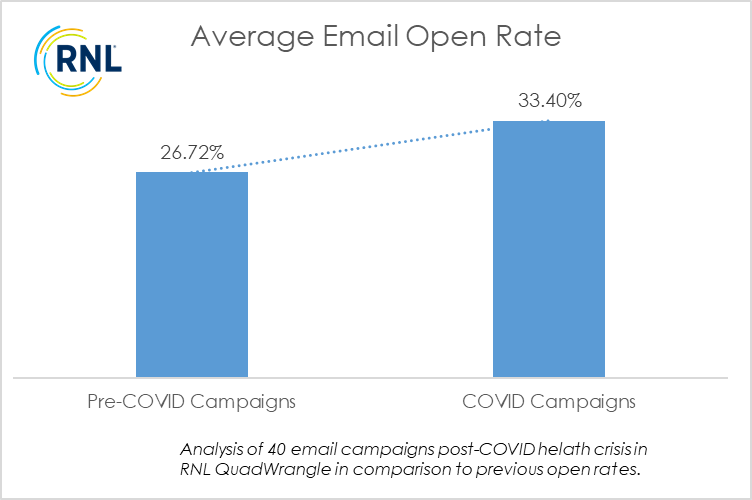
We’ve also took a look at how people are engaging via mobile. We analyzed results from 370,000 P2P texts from April 10 to May 6, and we are seeing almost a 7% average reply rate. There was an interesting variance in reply rate based on the text purpose. You’ll notice in the chart below that P2P texting that focuses on engagement, and texting that is integrated into other channels like giving day or reminders have considerably higher reply rates. The more personalized and relevant to their situation, the more donor engagement and response you can expect using text.
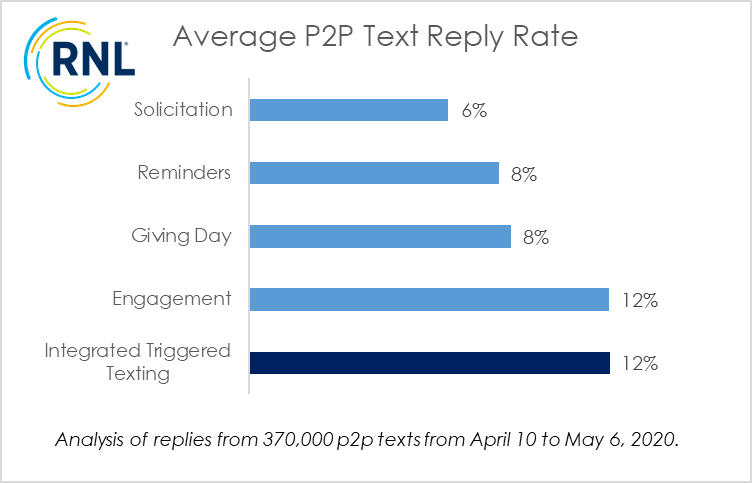
We can’t stress enough the importance of channel integration as you fundraise for the remainder of FY20 and into FY21 to create a more cohesive experience for your constituents.
Should I expect fewer people to give? Remote engagement result are promising.
As Digital Engagement Centers (the thing we used to call phonathon) have moved from on-campus physical centers to virtual digital engagement centers with students anywhere across the country engaging alumni everywhere, we’ve seen very encouraging results. This includes both institutions that leverage RNL to manage their digital engagement center and also for those that use the RNL Engage platform. Pledge rates have increased during COVID-19 for institutions with remote engagement.
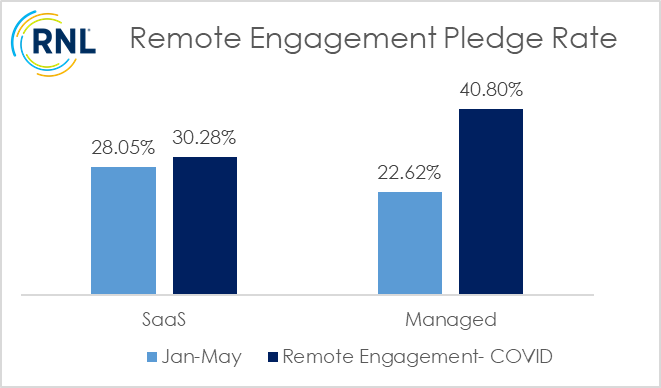
The higher pledge rate is also indicative of the donor types that are being engaged, with many 2nd gift campaigns and a lot of donor retention and reacquisition efforts underway. While results vary from institution to institution, we are seeing pledge rates that match what we expect to see at this point in a fiscal year.
Fewer institutions are engaging new donor acquisition prospects and we expect in FY21 that trend to continue. Donor acquisition will still be crucial, however. It will be more important than ever to leverage advanced analytics to narrow down the acquisition focus to those most likely to engage and support, while leveraging more cost effective engagement channels for those not yet ready to financially support.
Will people give less? That’s uncertain, and digital channels show a boost.
The short answer to this is “it’s hard to tell”, but they definitely will if you ask for less. For many of our client partners that are leveraging remote engagement, we’ve noticed a drop in average gift as indicated below, but the cause isn’t necessarily due to the economy. Many of these institutions have intentionally reduced their ask strategy to either be more sensitive as they restarted active fundraising or because their request for support has shifted from being unrestricted or unit focused and instead moving toward campaigns that inspire in the current environment like student emergency funds, with gifts of any size.
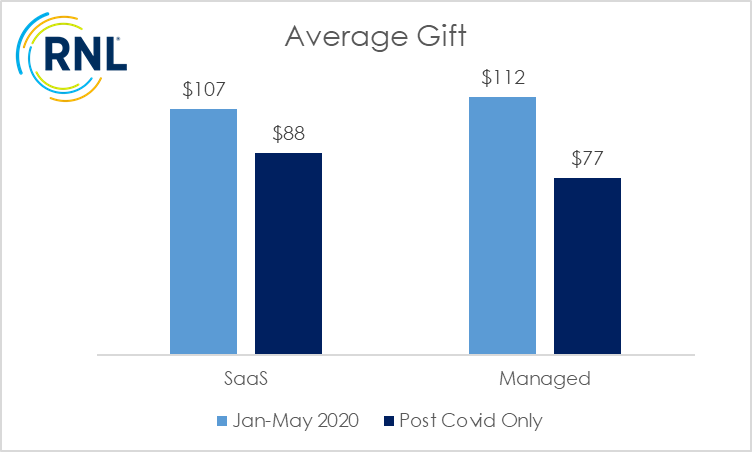
For digital giving, the data tells a different story. We took a look at nearly 200 institutions that leverage our RNL ScaleFunder platform. As you can tell, the average gift is up over $35 from the previous year.
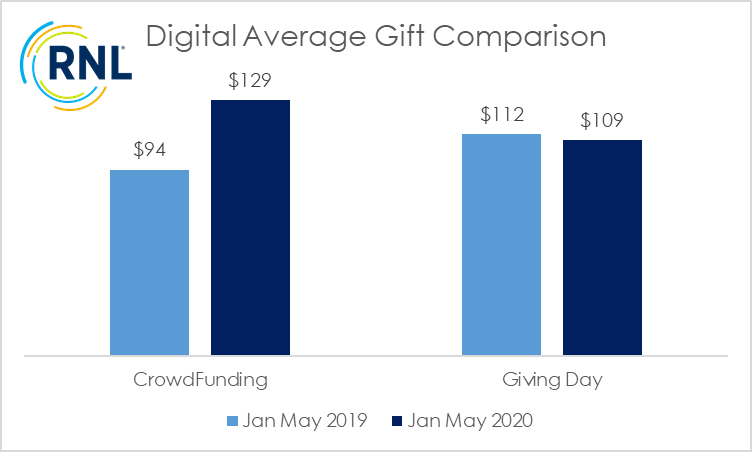
Giving Day gifts have been slightly lower this year, but keep in mind that some institutions moved giving days to later in 2020 or have been less aggressive in their giving day outreach.
While you build out yeour FY21 strategy, we’d love to hear from you and understand your approach. We will be conducting quick surveys over the coming weeks to gauge where higher ed advancement leaders are going n FY21. Please accept my invitation to be part of the research when you receive our email invitation, and come back to see the results here.
Be Safe!